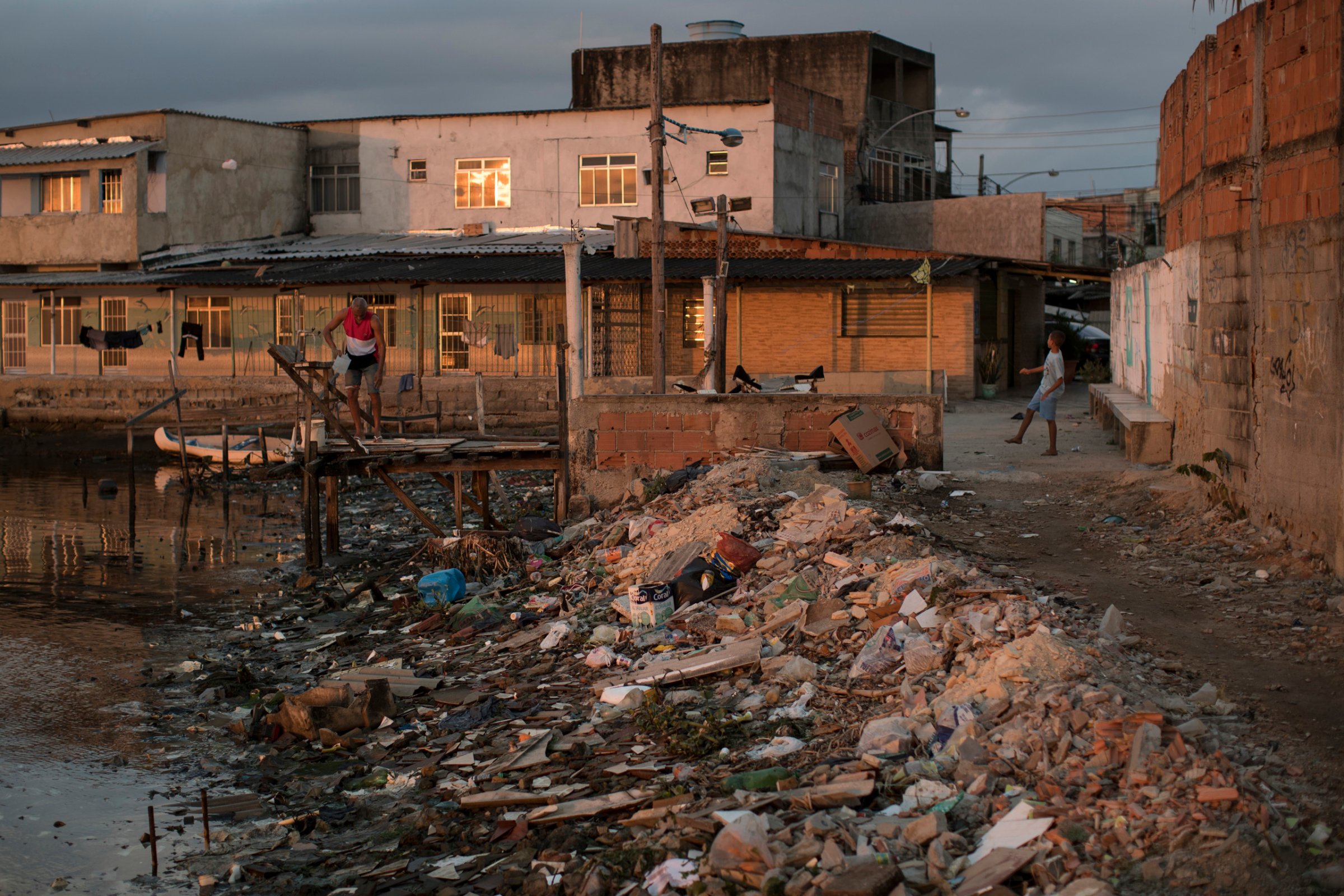
Forget about the floating tires. You can spot those in the water even in clean cities around the world. What gobsmacks you as you approach a canal near the Rio international airport, a body of water that flows into the city’s Guanabara Bay – home of the 2016 Olympics sailing venue — is the smell. It’s a gaseous stench: inhale it at your stomach’s own risk. There’s also the sludge, so thick you slip on it. And the sheer mass of stuff: Christmas ornaments, milk cartons, cookie packaging, clothes sitting in the stew. Then there are all the insidious things you can’t see.
Why is Guanabara Bay in such dire shape? “For the past 30 years, we’ve invested very, very little money in it,” says Paulo Rosman, a professor of coastal engineering at the Federal University of Rio de Janeiro. He says some $800 million has been spent in bay cleanup since 1990. In contrast, Maracana stadium, home of the opening and closing ceremonies, was given a $400 million facelift ahead of the 2014 World Cup.
(Read More: 60 Athletes to Watch in Rio)
Indeed, falling far short of their promise, made seven years ago, to clean up 80% of the pollution in Guanabara Bay is among the biggest failures of the Rio Olympic organizers. While the water is said to be cleaner than it was before Rio won the bid for these Summer Games, the pollution is still putting athletes competing in the bay and other bodies of water around the city — sailors, open water swimmers, rowers, triathletes — at risk. An Associated Press investigation in early August found that Rio’s water is “as filthy as ever, contaminated with raw human sewage teeming with dangerous viruses and bacteria.”
To Rosman, the promise to clean the waterways was all but guaranteed to fail. He says the reason is social more than scientific. “Everyone looks out into the water and says it’s a problem,” says Rosman. “Put your back to the bay, and you’ll see the problem. It’s as simple as that. There’s no magic in that.”
(Read More: Brazil’s Impeached President Talks to TIME)
What you see when you turn away from the bay are the favelas housing millions of Rio’s poor residents. These impoverished neighborhoods, scattered atop the city’s hills and mountains, often lack basic sanitary services, like plumbing and garbage pickup. Without these essentials, waste flows into water. “People there are fighting for survival,” says Rosman. “They’re worried about quantity of life, not quality. They go to the bathroom and have to use plastic bags to clean up. Where to these plastic bags end up? The bay. It’s a tragedy.”
One that’s far more serious, and lasting, than anything confronting the sailors, rowers and swimmers during these Olympic Games.
More Must-Reads from TIME
- Donald Trump Is TIME's 2024 Person of the Year
- Why We Chose Trump as Person of the Year
- Is Intermittent Fasting Good or Bad for You?
- The 100 Must-Read Books of 2024
- The 20 Best Christmas TV Episodes
- Column: If Optimism Feels Ridiculous Now, Try Hope
- The Future of Climate Action Is Trade Policy
- Merle Bombardieri Is Helping People Make the Baby Decision
Write to Sean Gregory / Rio de Janeiro at sean.gregory@time.com and Julia Lull at julia.lull@time.com